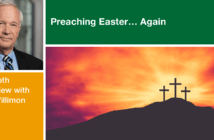The use of social media is so prevalent today that it is essential for churches to master ways of creating connections and community online. Lia McIntosh, Jasmine Smothers, and Rodney Smothers outline four critical steps in building your church’s social media presence.
With 1.5 billion users on Facebook, the majority of our U.S. communities and most churchgoers are connected using social media. So, gaining mastery in the strategy and execution of social media to create community is essential. Importantly, this is not the work of the pastor or lay leader alone. It requires a team, including Millennials and members of Generation Z (even though they may not use the same social media platforms that are familiar to older generations in your congregation).
Here are four essentials as you build your social media presence:
1. Quality over quantity.
If your goal is to represent your church, brand, or product on Facebook, creating a Facebook page is essential. A page allows you to engage with people on Facebook and offers tools to help you manage and track engagement. You can have an unlimited amount of people following you, and you can follow up to 5,000 people. Once you have a page, publishing quality content is essential. Remember better social media content, not necessarily more content, is the goal. People’s social media news feeds are noisy places with posts from friends and advertisements from marketers. In the midst of this noise, some churches might be tempted to promote every church meeting, event, and worship service. Yet, social media is not just about promoting. The primary purpose people are on social media is for social connection, not advertisement. Our first goal on social media must be encouraging, helping, and inspiring people with quality content, not just quantity.
2. Timing is important.
There are many social media hubs like Hootsuite and Buffer that can automatically post your social media posts at times when people can actually read them. Posting when your day slows down, in the middle of the night when you remember, or at other off times usually means low interaction — people just don’t see them. Using a service to post on your behalf means that you will maximize your audience by ensuring that when your post hits the noisy social media feed, people will see it. If people see the post, your quality is good, and your content is helpful, they will interact with it. If the people interact with it, you maximize your audience because it is then shared across multiple networks, not just your own.
3. Use images to get your audience’s attention.
You may have heard that after 72 hours we only remember 10 percent percent of what we read, 20 percent of what we hear, 30 percent of what we see, 50 percent of what we see and hear, 70 percent of what we discuss with others, 80 percent of what we personally experience, and 95 percent of what we teach others. This comes from Edgar Dale’s “Cone of Experience,” developed in 1946 that provided an intuitive model of the concreteness of various audiovisual media. Researchers have disputed the exactness of these numbers, but our experience is that engaging people using text, images, and live video is most effective.
4. Create Facebook groups to enable deeper engagement.
Facebook groups bring together individuals who share a common interest. For example, small groups, mission teams, or worship committees could create their own Facebook groups to build community and share inspiration and information. Of the people on Facebook, many have identified the groups they belong to as very meaningful — communities that quickly become the most important part of someone’s experience on Facebook.
Excerpted from Blank Slate: Write Your Own Rules for a 22nd-Century Church Movement (Abingdon Press, 2019) by Rodney Smothers, Jasmine Smothers, and Lia McIntosh. Used by permission. The book is available at Cokesbury and Amazon.
Related Resources
- Maintaining Boundaries in a Digital Age, an online course from the Lewis Center
- The Theology of Social Media by Thomas G. James
- 6 Simple Tips to Get More Likes on your Church’s Facebook Page by Jeremy Steele






